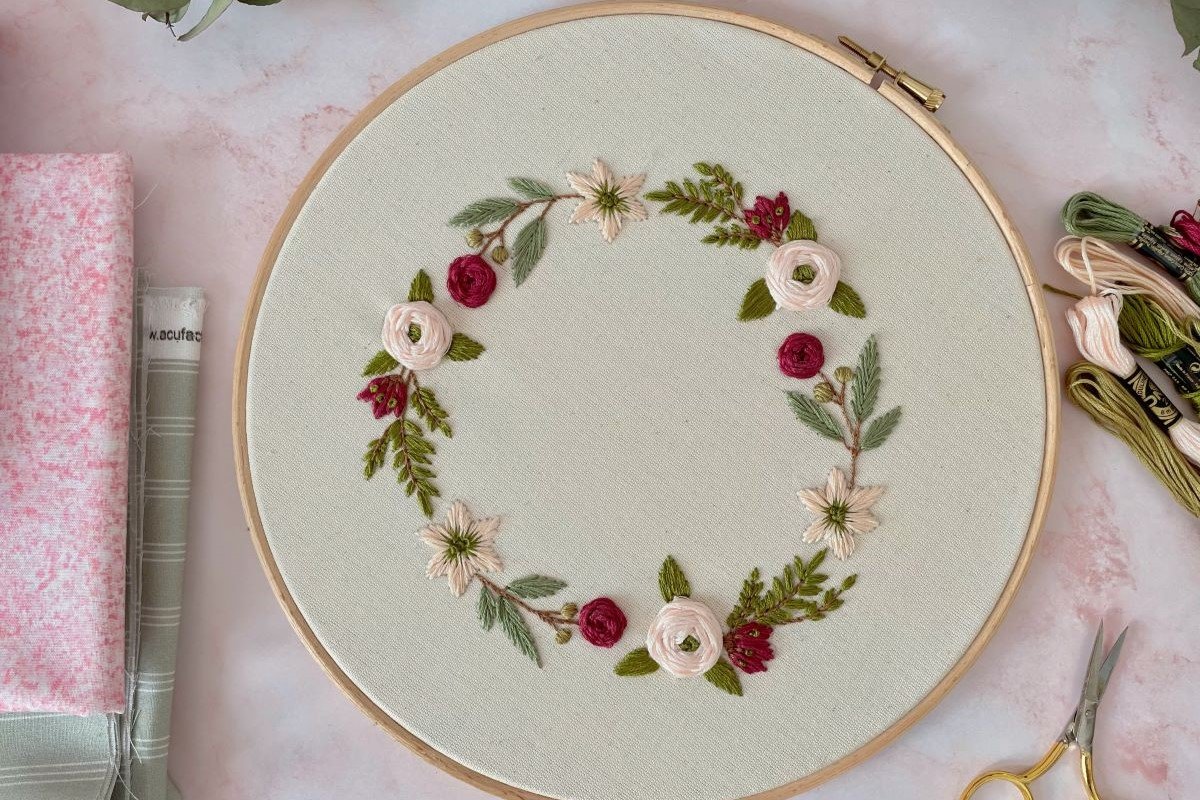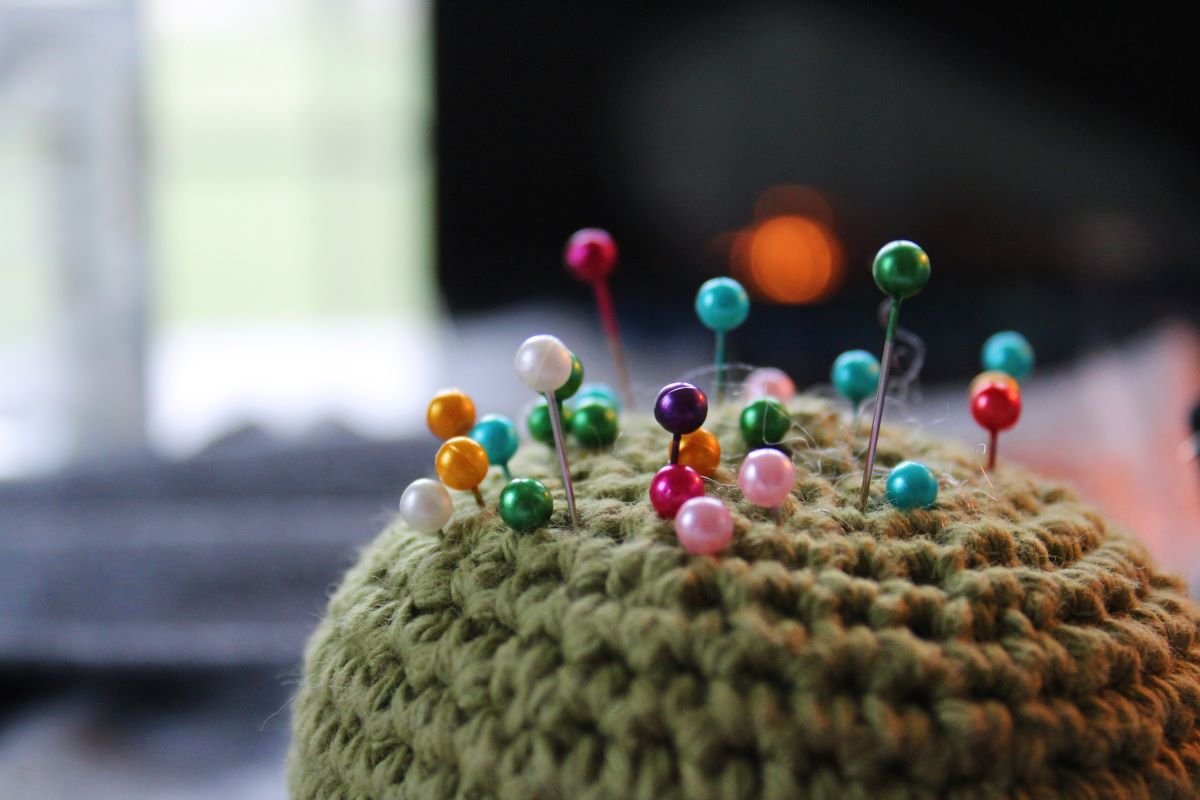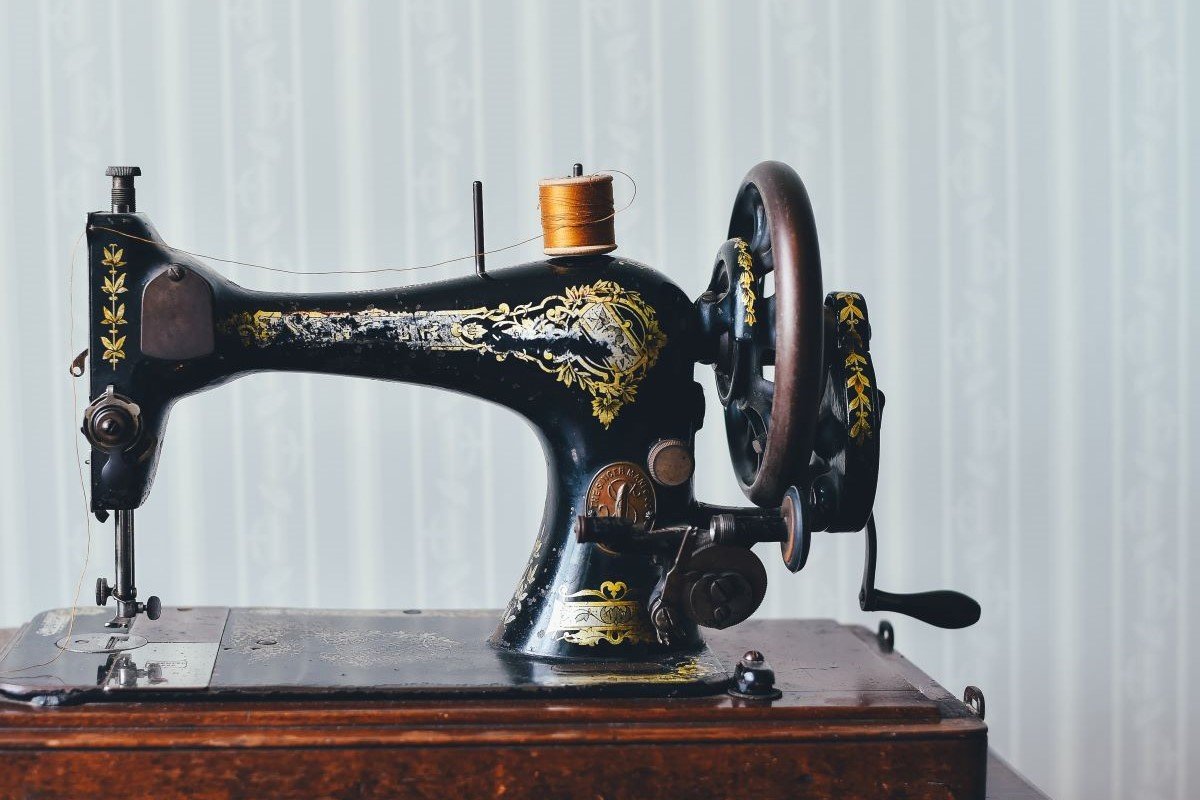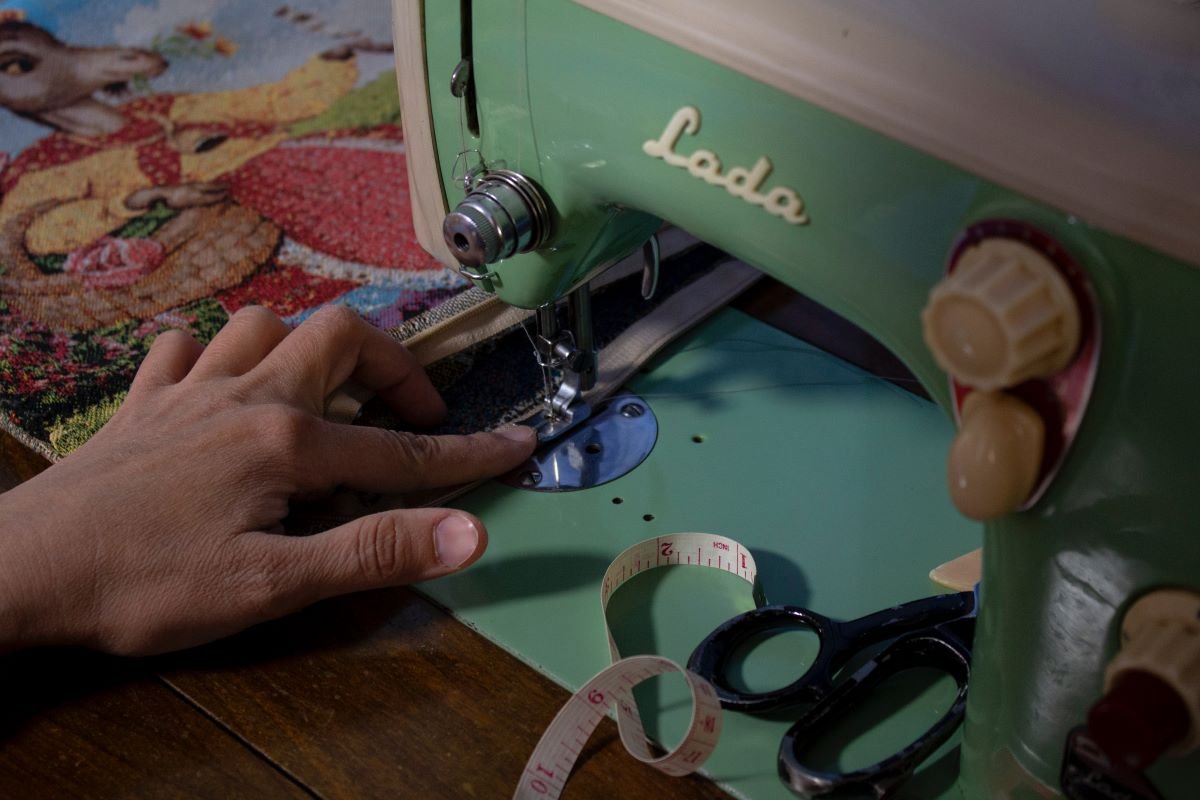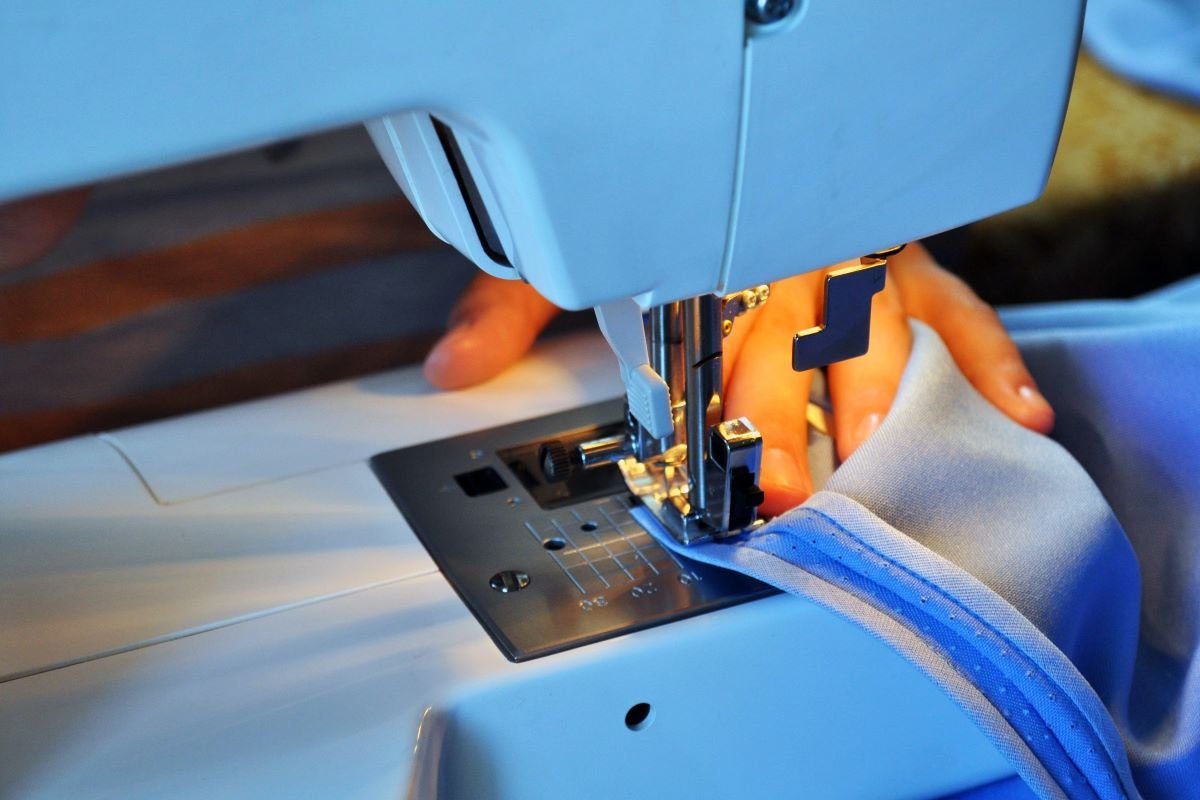
Thread bunching up while you are sewing can be the most frustrating problem. Not only do you now have a ton of seam ripping to do, but a problem to fix, and all you wanted to do was sew a dress. The good news is you are not alone; every sewer experiences bunching thread at some point. Start by not freaking out, take a deep breath, and read below to learn how to fix the problem.
Reasons Your Thread Bunches Up When Sewing
Before you panic, you need to check a few areas to determine where the problem starts. First, take out your thread and bobbin and set them up fresh. Next, grab some leftover fabric (always two pieces together) and make a quick line. If the problem continues, it’s time to go to the next step.
Check the side sporting the bunching. If it bunches on the top, you have a different problem than if it bunches underneath. On top means it’s a problem with the thread or machine, while on the bottom indicates an issue with the bobbin. Finally, pull out a seam ripper and sweep under the bobbin cover gently to pull up any loose strings possibly trapped, causing the problem. Now let’s look at the most common issues.
Here are some common reasons that thread bunches up while sewing:
Tension
Your machine’s tension may be a quick explanation for the bunched thread.
Tension maintains the even spacing of the top and bottom stitches, ensuring symmetry of the thread from the bobbin and from the spool. Without symmetry, the stitches pucker and create an uneven seam. Check your tension before moving on.
Thread
The wrong thread for the wrong fabric can lead to bunching as well. Weak thread can cause the problem too. Always invest in the high-quality thread to avoid such issues. In addition to being more prone to breaking, the fibers in low-quality thread tend to be looser. Loose fibers and thread fragments cause an increase in lint production in a sewing machine.
Next, improperly threading the machine can lead to bunching. The bird’s nest effect occurs from tension either too high or too low. Simply take out your bobbin and rethread the thread for the top, ensuring to guide the thread in the correct order as shown on your machine. Next, you should give stitching a go using a practice piece.

Presser Foot
Your presser foot could lead to the problem too. A presser foot guides the fabric through the need and, if not properly secured, will bunch up the thread and the fabric. Although it may seem obvious, it is easy to forget to lower the presser foot when sewing thick fabrics or multiple layers. This is because the top thread needs the strain of the presser foot to prevent bunching of fabric and thread.
When you thread the bobbin with the presser foot down, you get tension. The thread ends up not sitting properly as a result. When the needle skips over the thread, it leads to bunching. Therefore, all threading should be done with the presser foot up so the thread may sit properly. More importantly, it will prevent the needle from having any trouble picking up the bobbin thread.
Bobbin
In some circumstances, especially on older machines or those with front-loading bobbin cases, you can adjust the bobbin tension using a little screw. When making changes to the bobbin tension, do it very gradually and verify the results on a scrap of fabric. Also, you must double-check that the bobbin, bobbin casing, and any other replaceable components located below the needle are firmly in place.
You need to check the bobbin casing for cracks or other signs of deterioration. However, do not try to physically alter the bobbin casing in any way outside of the screw adjustment. For example, a loose bobbin screw might cause the thread to bunch up.
Finally, incorrectly winding the bobbin leads to bunching. Always watch the bobbin and restart if the thread does not go on evenly and smoothly. It’s annoying to cut the thread, but it can save a ton of trouble in the long run. Check for lumps and knots. If these show up, then you need to make sure the thread runs to the bobbin properly.
Needle
If the thread pulls unevenly, which can happen if using a dull needle or a needle that is not suited to the fabric, then the thread will bunch. Replace your needle if the problem of bunching continues, and be mindful to change the needle for thicker fabrics or multiple layers.
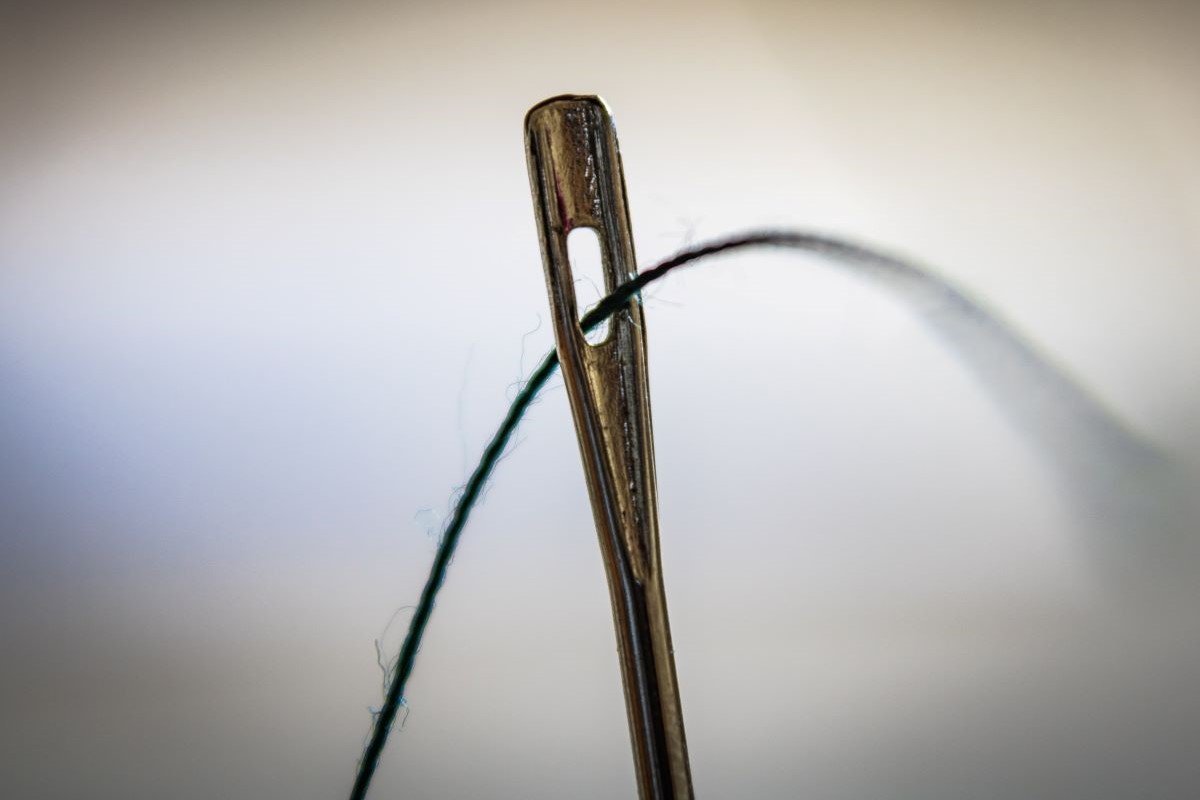
Improper Machine Maintenance
While sewing machines can cause trouble, they are fragile. Make sure you clean your machine often and do a thorough check-up regularly. Most vacuum cleaners’ hoses can be fitted with a special attachment designed to collect and store lint. Cleaning out the bobbin region on a regular basis is necessary to prevent the buildup of lint and loose threads.
Stitch Length
A too-fine thread length might damage certain fabrics. A cluster of stitches could form if the fabric became stuck or was tugged down. Because of the way the stitches will clump up, unpicking this will be a challenging process. Make the length adjustment and retry with the longer sample.
Thread Tails
Keep at least three inches of fabric behind the cloth at all times before beginning to sew. Doing so will prevent the threads from being sucked under the fabric and becoming tangled in the bobbin. This can lead to a situation where the fabric bunches up and gets stuck on both sides.
Using a Stabilizer
Some fabrics may benefit from using fusible interfacing or a washable or heat-away fabric stabilizer to help keep them flat and manageable during sewing. Be sure to read and follow all label instructions before using.
Unsuitable Fabric
Materials like leather and pleather are too thick for some sewing machines. If you try to push a machine beyond its designed capabilities, the thread may bunch up because the tension is too low. When you push your sewing machine too far, it can break down permanently. Consider changing to a heavy-duty machine to continue making your projects.
Final Thoughts
Sewing machines are fine instruments ready to sew fabric together with your help. However, when one cog does not connect properly, you may experience bunching thread. Check the eleven issues above and make the necessary changes so you can get back to your creative space and make beautiful things.


